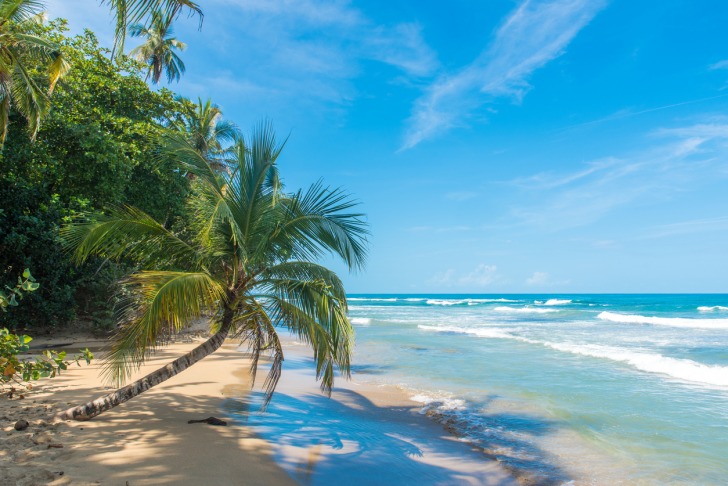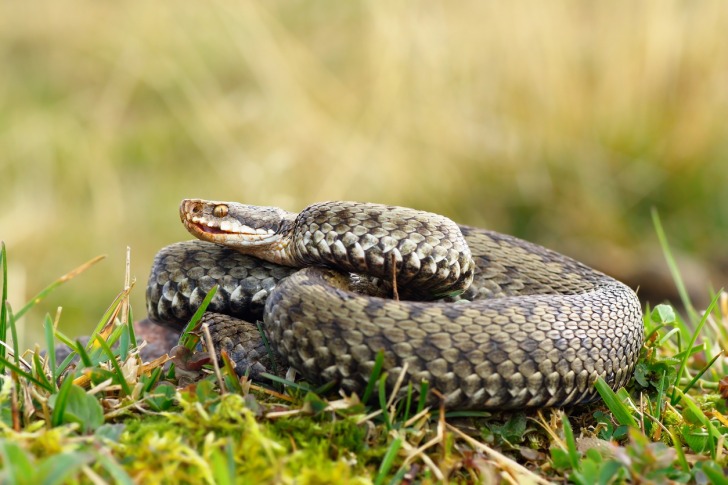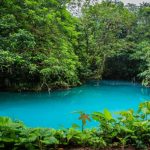Costa Rica evokes images of beaches, sloth reserves, and even ziplining through the rainforest.
Essentially, this Central American country is one that travelers go to for an adventure.
However, an adventure no one wants is the type of excursion that will end in a trip to the emergency room.
In a place with so many outdoor activities to pursue, there are already plenty of ways to get hurt in Costa Rica.
But what about the natives?
No, we don’t mean the local citizens.
What we are hinting at is the wildlife.
A smidgen over half of Costa Rica is rainforest.
With that fact, it leaves the possibilities of what could come crawling, or slithering out, endless.

Contents
So… Are There Snakes in Costa Rica?
Yes is an understatement.
There are 137 snake species in Costa Rica.
Snakes range from just over half a foot up to 10 feet long.
Thankfully, for those with fear, a majority of the serpents here are on the shorter side.
Snake Species in Costa Rica
Naming all of the known species of snakes here would take a long time.
Instead, we’ll break down the types of snakes and examples of species for each.
Venomous
There are 22 species of snakes in Costa Rica with venom.
Of those, fer-de-lance is the most dangerous.
The reason this particular snake stands out, aside from being venomous, is it seems to deviate from most snakes and purposely dwells near people.
Are these snakes just born with a bad attitude?
Probably, so it’s more likely you’ll come in contact with this species before any others, unfortunately.
Other similar snakes to avoid are elapids.
Not even water can save you from these guys, two types of which live in the sea.
It should be noted that just because a snake has venom doesn’t mean an automatic death sentence to anyone who gets bit.
Most venomous snakes aren’t dangerous to humans.
Non-venomous
An overwhelming majority of Costa Rican snake species fall into this category.
Funny enough, you might not think that from looking at them.
Nature has taught us that bright-colored creatures are often ones with poison.
The biggest family of non-venomous snakes, colubrids, are often with color.
Giving off intimidating vibes is about as scary as they get.
Not having fangs filled with venom takes a lot of bite out of the bark.
Constrictors
Not all snakes need poison to permanently take down their victims.
A constrictor’s claim to fame is taking life by squeezing their prey to death.
It’s not the loss of air that ends the victim, it’s cardiovascular failure.
Two of the more common constrictors in Costa Rica are the boa and python.
Boas is known to sort of hide in plain sight, thanks to color-changing abilities.
They aren’t huge fans of people but probably prefer to be found near large gatherings of chickens.

Is it Safe to Go on a Trek in Costa Rica?
For travelers abiding by the rules, it is safe to explore Costa Rica.
Anyone who is determined to set out on their own in unfamiliar territory might not have the same experience.
As mentioned, there are a ton of snakes here.
These creatures have a variety of preferences and blending capabilities.
It would be easy to accidentally come upon a snake and not know what kind of intention it has.
Stay safe and go with a group or a well-put-together path.
Interesting Snake Facts in Costa Rica
5% of all the snake species on the planet reside in Costa Rica.
Six of the local species grow to be 10 feet or longer.
There are 22 poisonous types of snakes here.
You’re just as likely to die from a lightning strike in Costa Rica as you are to die from a snake bite.
3 Safety Tips for Exploring Nature in Costa Rica
1. Consider Tree Tops
Young boa constrictors live exclusively in tree tops.
Since these snakes can blend in with their environment, they would be easy to miss.
If you plan to take a stroll through the rainforest, you’ll be wise to look ahead.
This goes for all types of snakes, but most would forget to look up as well as on the path or the land surrounding a route.
Unlike what happens in Jungle Book, a snake is not going to swoop down and grab someone to throw them in a headlock.
But it never hurts to take extra precautions.
2. Listen for Hissing
Before striking, boa constrictors will hiss to let you know they are not pleased.
This is a warning to not proceed and get away as fast as you can.
Of course, it’s not going to be the end of the world if you are bitten by a boa.
It might make you cry but it won’t take your life.
What you don’t want is for the snake to start wrapping itself around you.
If you are bitten, do what you can to escape so the boa can’t get to you.
3. Play by Day
Snakes hunt at night.
Not only do they avoid people in general, but they are likely partaking in leisurely activities during the day.
However, the night is often when they get the most done.
Going out after dark in Costa Rica is putting yourself in harm’s way.
If you’re feeling antsy after sunset, stay in the cities.
Summary
Essentially, snakes are a part of the natural day-to-day life of Costa Rica.
They come in all shapes, sizes, colors, and levels of danger.
However, that should not make you worry about visiting the Central American country.
What it should do is fill you with a healthy dose of caution while out and about.
Costa Rica Safety Overview
READ THE FULL REPORT: Costa Rica Safety Review
Safety Index:
- OVERALL RISK: MEDIUM
- TRANSPORT & TAXIS RISK: MEDIUM
- PICKPOCKETS RISK: HIGH
- NATURAL DISASTERS RISK: MEDIUM
- MUGGING RISK: MEDIUM
- TERRORISM RISK: LOW
- SCAMS RISK: HIGH
- WOMEN TRAVELERS RISK: MEDIUM
Frequently Asked Questions
Are snakes a problem in Costa Rica?
22% of all international travel in Central America is in Costa Rica.
That’s to say that tourism is an important player when it comes to the economy.
If snakes were a problem, that number would be much different.
Most snakes do their best to keep a distance from people.
Don’t let that give you too much confidence, though.
There are still around 500 snake bites in Costa Rica annually.
Am I likely to see a snake during a trip?
Yes and no.
Snakes are common, especially when out on an adventure across the land.
They probably blend in with the environment, though, so you have to be on the lookout.
How fast do I need to get antivenom?
Don’t waste time after a snake bite, but don’t feel like you will die if you aren’t running for help.
For the most part, you have about four hours to get antivenom before it’s too late.











